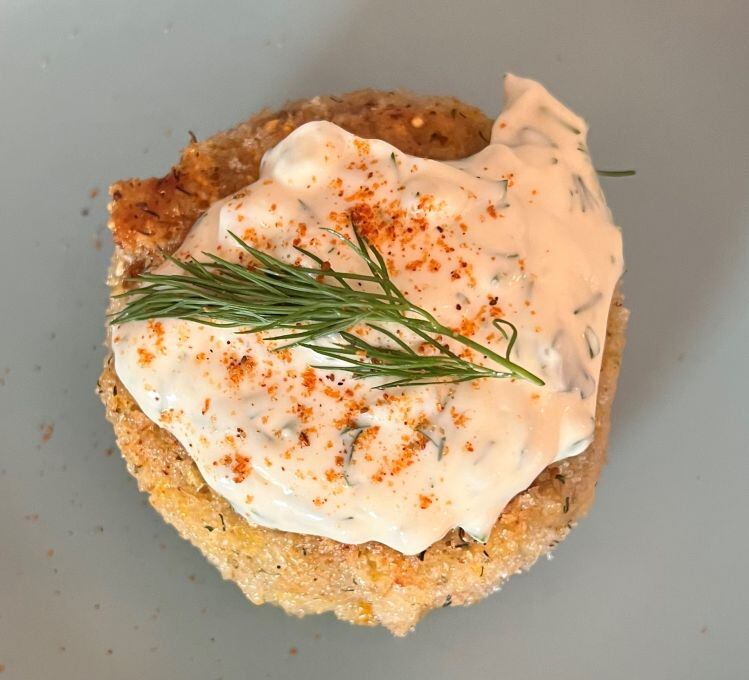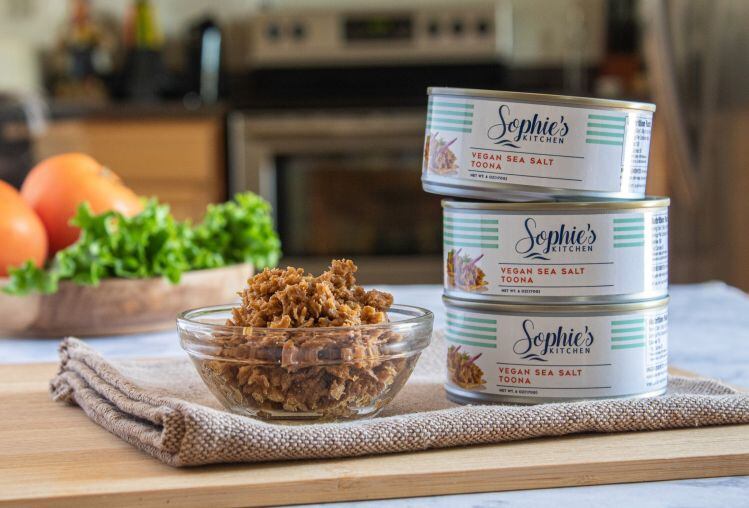Startups in the alt seafood space are currently deploying a variety of technologies and ingredients, with some utilizing a mix of plant-based proteins (Good Catch, Sophie’s Kitchen, Plantish); some experimenting with fruits such as winter melon (Finless Foods); and some developing fungi-based whole-cut products via a fermentation process (Aqua Cultured Foods).
Regardless of the approach, however, many companies in this small – but fast-growing field - have struggled to incorporate omega-3-fatty acids such as DHA (something many consumers expect to see in a seafood product) into their formulations for technical (stability) and cost reasons (algal oils are expensive), said Smallfood founder and CEO Marc St-Onge.
High quality protein, omega-3 EPA+DHA, and seafood flavor... at an affordable price?
Smallfood’s Non-GMO whole biomass ingredient – a single-celled marine organism belonging to the Thraustochytriidae family, that is not strictly animal, plant, or fungi – contains EPA and DHA within its cells, and can be added to alt-seafood formulations to boost protein and omega-3 levels, while imparting a seafood flavor that isn’t overpowering, he said.
“The first thing that attracted them [brands making seafood alternatives] is the fact we’re offering a cost effective solution to incorporate EPA and DHA into their products, plus it naturally has the flavor profile they're looking for, as [seafood] flavors are also expensive.
“We’re providing high quality protein, omega-3 EPA+DHA, and seafood flavor, while ensuring price accessibility.”
Smallfood biomass could also be added to cell-cultured seafood products

So how might Smallfood's ingredient work in an alt seafood application?
Extruding the biomass powder to texturize it is not advisable given that the omega-3s inside it are prone to oxidation, acknowledged St-Onge. But companies can combine it with texturized soy or pea protein or work with hydrocolloids to create texture.
"We’ve done a lot of research in terms of how to texturize a seafood alternative [with the biomass] using different hydrocolloids in a low temperature environment to preserve the integrity of the nutritional components but get that nice, fibrous soft flake you get from a traditional seafood product.”
Smallfood's biomass ingredient is also attracting interest from petfood companies and is “ideally suited to help blend down the cost of cultured fish without sacrificing nutrition and taste,” claimed St-Onge.
A 'protein that more closely mirrors the amino acid profile of beef than plants'
Smallfood has developed technology to extract protein concentrates and isolates from the biomass, but is prioritizing the whole food after interest from alt seafood companies, said St-Onge, who has raised more than CAD$20m to date, and is now raising money to build production capacity in-house (right now, Smallfood is partnering with contract manufacturers).
“The original positioning was to grow the biomass and process that into isolated ingredients, but things started to change after we entered the XPRIZE Feed the Next Billion challenge [Smallfood and fellow Canadian startup Terra Bio, which extracts protein from brewers’ spent grains, are developing alt-fish fillets as semi-finalists in the $15m XPRIZE competition]."

According to SPINS data collated for the Plant based Foods Association and the Good Food Institute, the US plant-based seafood market is pretty small compared to the traditional seafood market (which is worth tens of billions of dollars), with retail sales of just $13.9m in 2021, but it is growing fast (+14%).
The organism produces protein, carrageenan-like carbohydrate, and long-chain omega-3s
The organism Smallfood is working with is pretty unusual in that it produces high levels of protein (65-70%) as well as carbohydrates, and long-chain omega-3 fatty acids, St-Onge told FoodNavigator-USA.
“We spent years bioprospecting, exploring what’s the perfect protein and asking what microorganism – the planet’s most energy efficient biological production system - can produce it?"
He added: “So that required sequencing more than 20,000 unique microorganisms, which produced one candidate that produces a protein that more closely mirrors the amino acid profile of beef than plants.
“It’s a wild type strain so there’s no genetic modification, but there’s a process of domestication; we had to learn how to grow it in an optimized way to ensure it remains happy and productive in a controlled environment.”
Protein-packed food to order?
While there has been rapid growth in capacity to process plant-based proteins over the last 12-18 months, micro-organisms grow far more quickly than plants (in days, rather than weeks or months), argued St-Onge, who said Smallfood's microorganism can consume lots of different types of sugars as feedstocks, including upcycled cellulosic sugars extracted from brewers’ spent grains.
Labeling: TBD
So how do you talk to consumers about eating microbes (not something you'll find in the average American pantry), and how will Smallfood’s ingredient be described on an ingredients list?
This is still something of a work in progress on both fronts, acknowledged St-Onge, given that it's not strictly accurate to describe Smallfood’s product as 'plant-based,' and it's not a fungi like Quorn or Nature's Fynd's 'Fy protein.'
A lot of companies, said St-Onge, are using the term ‘microalgae’ to describe ingredients that are not strictly classified as such (spirulina, for example, is blue-green cyanobacteria, but most people call it microalgae), so Smallfood often uses 'microalgae' in marketing materials although its organism is technically in the Thraustochytriidae family (it’s a single-celled marine protist, another term that doesn’t mean much to shoppers).
As for what's officially on the ingredients declaration, it’s still to be determined, but Smallfood will probably be able to describe it as ‘whole microalgae powder,’ said St-Onge, who has completed toxicology work demonstrating safety, and is putting together a GRAS determination.

